Drosera albonotata A.S.Rob., A.T.Cross, Meisterl & A.Fleischm.
The specific epithet albonotata is derived from the Latin albus (white) and notatus (marked), a reference to the two basal marks of white on each petal, the overall effect of which is a collar of white around the floral center.
Drosera albonotata is largely restricted to sandy clay loam soils in Wandoo woodland in the wheat belt region of Western Australia.
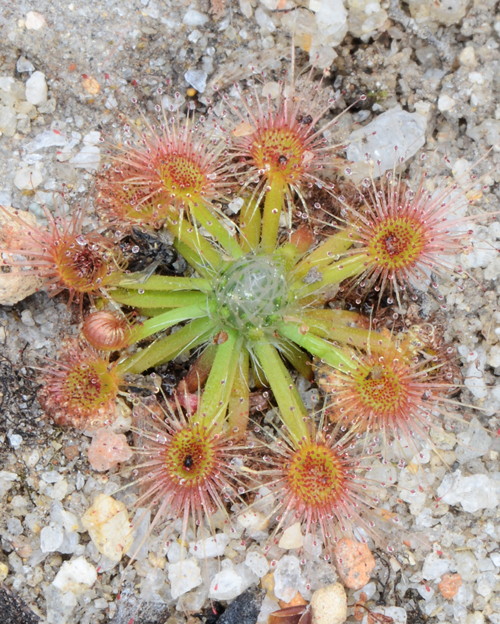
Drosera albonotata. Photo © Richard Nunn.
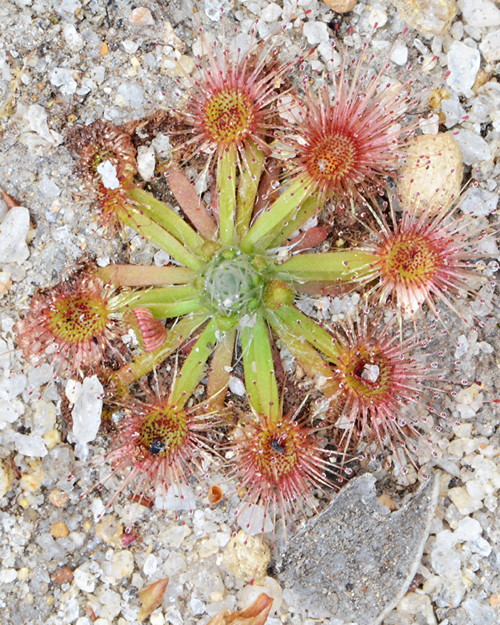
Drosera albonotata. Photo © Richard Nunn.
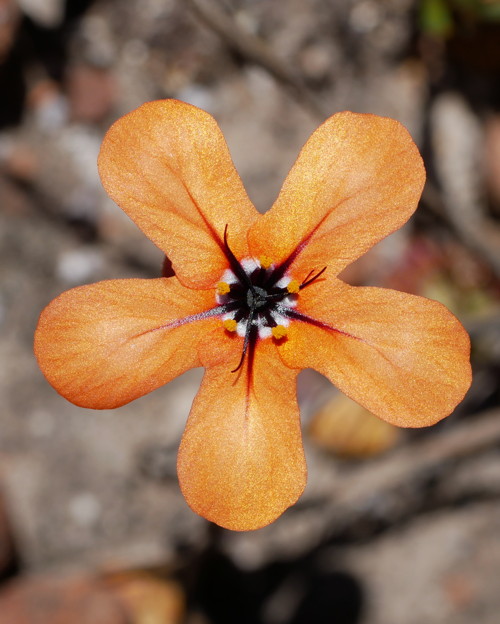
Drosera albonotata. Photo © Thilo Krueger.
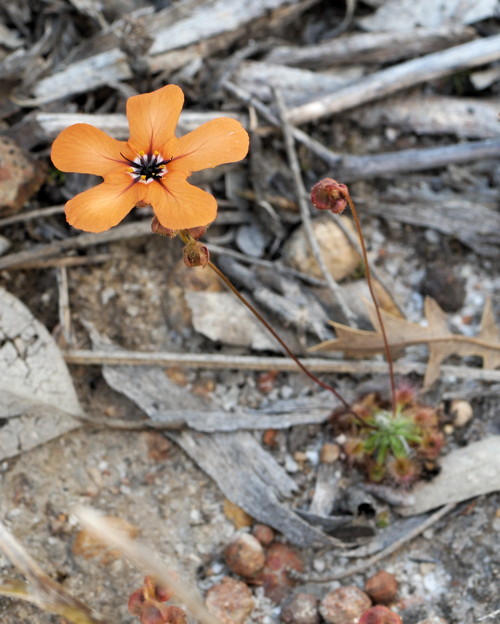
Drosera albonotata. Photo © Thilo Krueger.
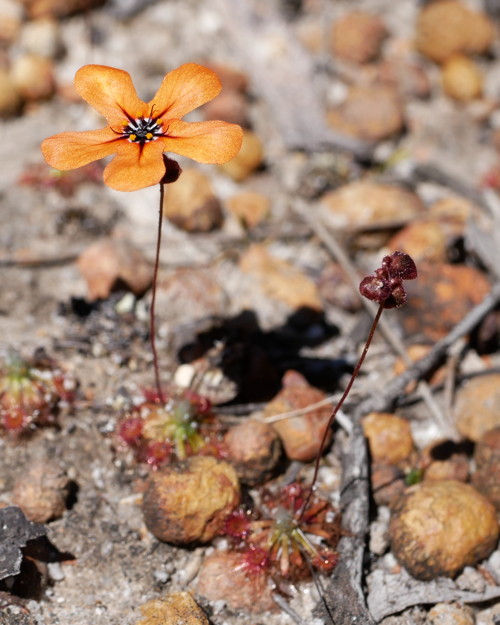
Drosera albonotata. Photo © Thilo Krueger.
Drosera allantostigma (N.G.Marchant & Lowrie) Lowrie & Conran
The epithet allantostigma is derived from the Greek allantoeidés (sausage-shaped) and stigma (stigma), a reference to the thick, almost horseshoe-shaped and apparently sausage-like stigmas.
Drosera allantostigma is known from only a few scattered roadside locations near Hill River north of Perth along the Brand Highway, Western Australia.
This species can be found in loam, silica sand or peaty sand soils on the margins of winter-wet depressions.

Drosera allantostigma. Photo © Thilo Krueger.
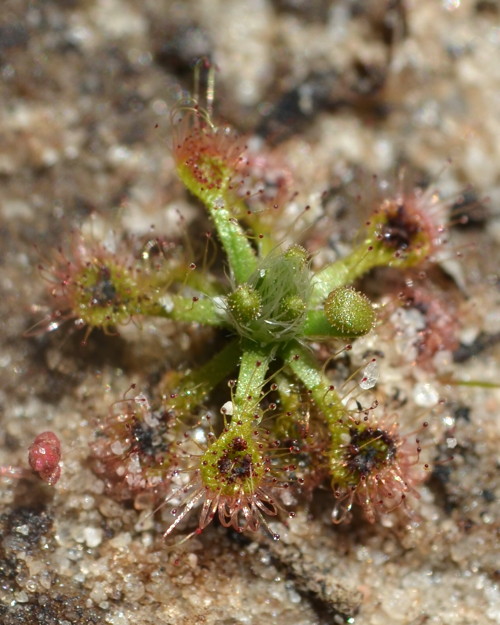
Drosera allantostigma. Photo © Thilo Krueger.
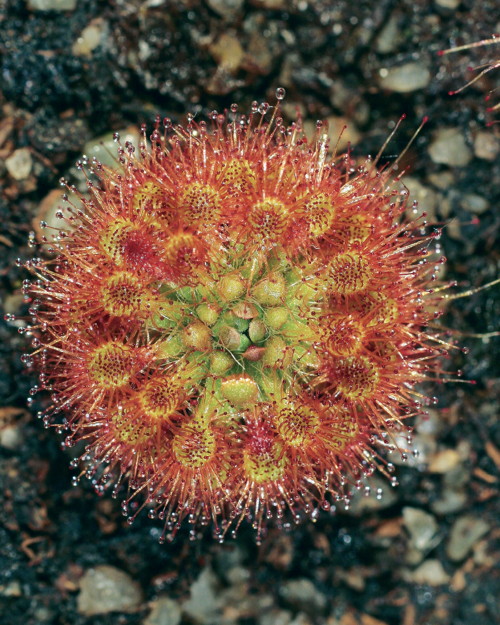
Drosera allantostigma. Photo © Manfred Meisterl.
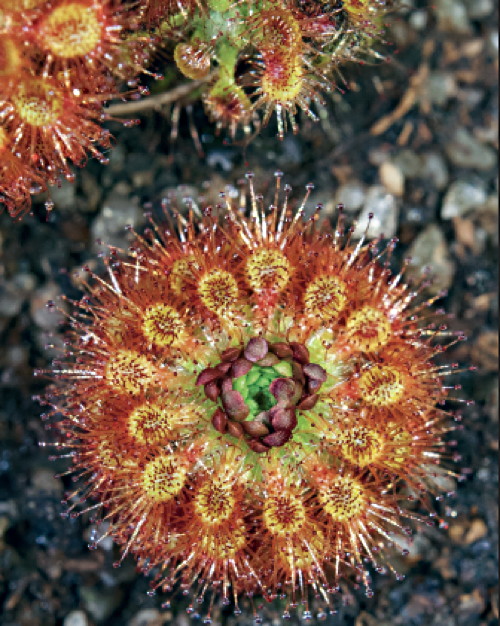
Drosera allantostigma. Photo © Manfred Meisterl.
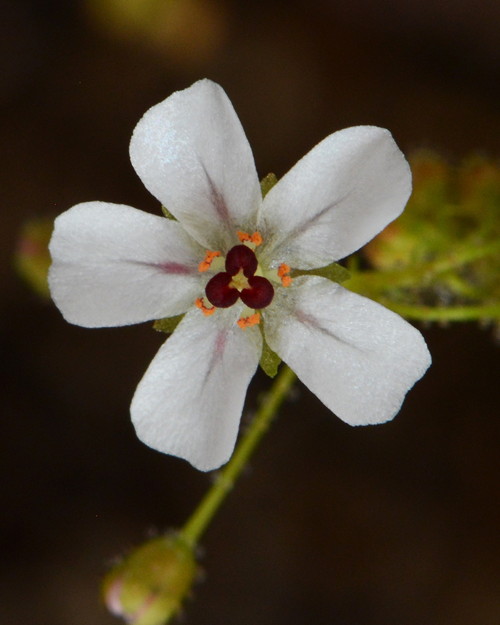
Drosera allantostigma. Photo © Richard Nunn.
Drosera androsacea Diels
The epithet androsacea refers to the similarity between the flower of this species and the small, white or pink, 5-petalled flowers of the rock jasmine, Androsace, a genus from the cooler regions of the northern hemisphere. The term androsace (man’s shield) is from Greek, a reference to the cushion-like habit of several Androsace species, said to resemble small shields.
Drosera androsacea is found in Western Australia to the south of Perth, with records from Corrigin, Dragon Rocks, Katanning, the Stirling Range, Varley and Williams.
This species grows in stony, white, sandy-loam soils, as well as in light brown loam with laterite gravels in low, open heath. In summer, these soils may dry out to become compacted and hard.
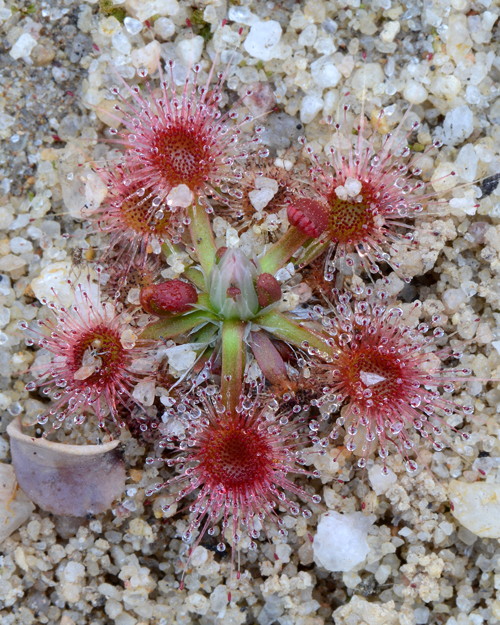
Drosera androsacea. Photo © Richard Nunn.
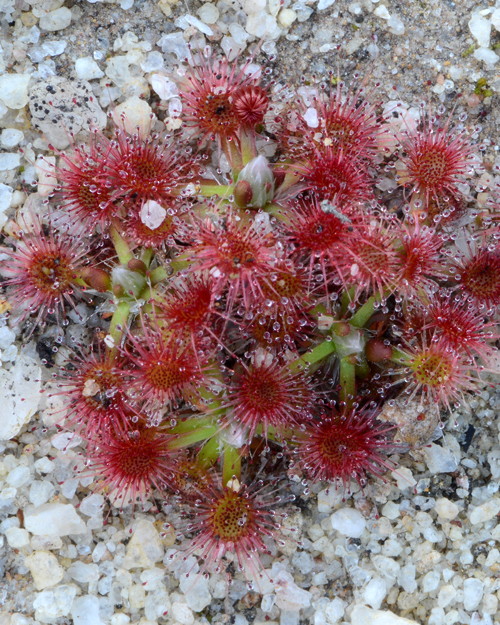
Drosera androsacea. Photo © Richard Nunn.
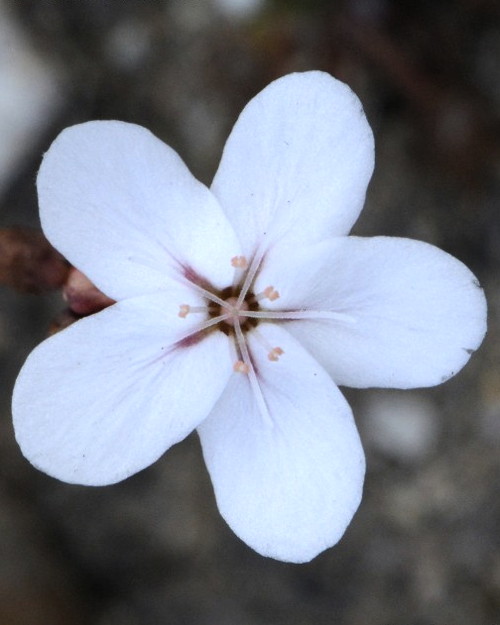
Drosera androsacea. Photo © Richard Nunn.

Drosera androsacea. Photo © Thilo Krueger.

Drosera androsacea. Photo © Thilo Krueger.
Drosera australis (N.G.Marchant & Lowrie) Lowrie & Conran
The epithet australis is the Latin australis (southern), a reference to this species’ range at the southwestern tip of Western Australia.
Drosera australis is endemic to a strip of land approximately 40 km wide that runs along the south coast of southwestern Western Australia between Augusta and an area east of Esperance.
It grows in sandy soils overlying laterite and seems to favour drier situations on ground near to wet depressions.
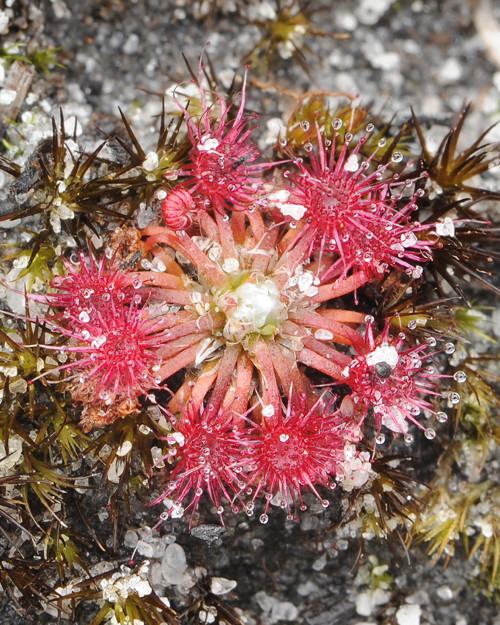
Drosera australis. Photo © Richard Nunn.
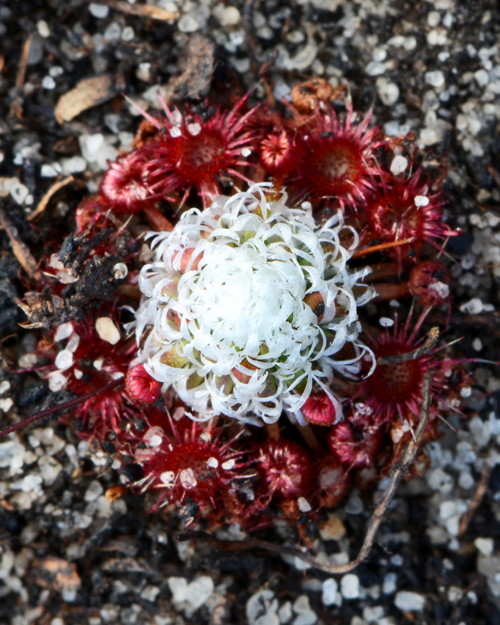
Drosera australis. Photo © Richard Nunn.
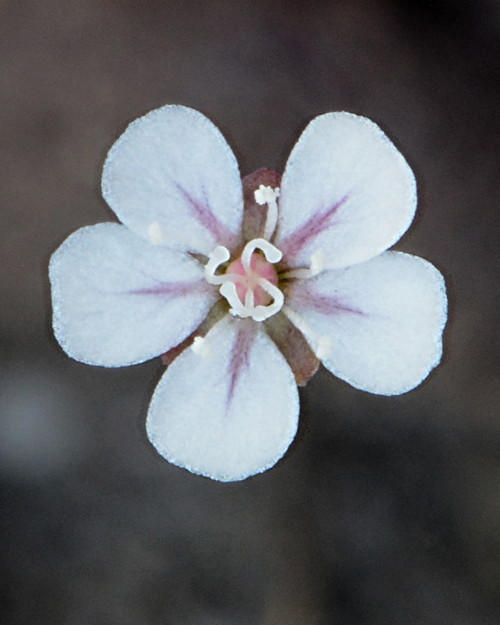
Drosera australis. Photo © Richard Nunn.

Drosera australis. Photo © Thilo Krueger.
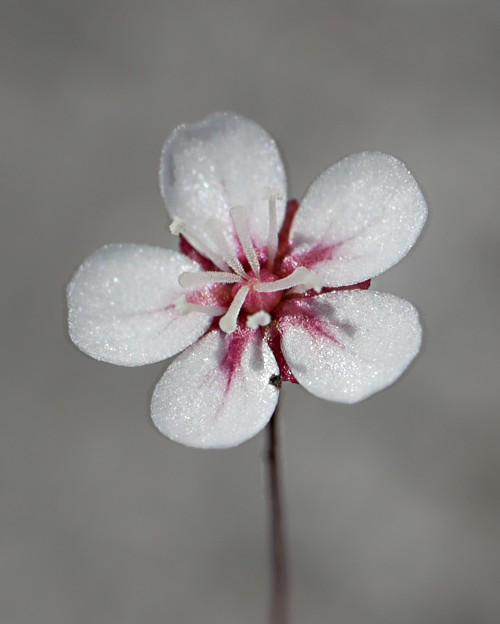
Drosera australis. Photo © Thilo Krueger.
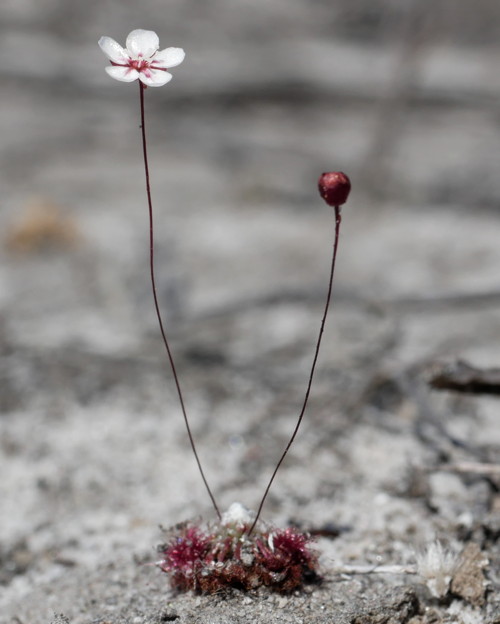
Drosera australis. Photo © Thilo Krueger.
Drosera barbigera Planch.
Drosera barbigera is named from the Latin barbigerum (bearded), a reference to the reddish, beard-like glandular indumentum that covers the peduncle, inflorescence, pedicels and sepals.
Drosera barbigera is distributed across two regions in Western Australia, namely Eneabba to York, and the Dumbleyung, Lake Grace, Jilakin Rocks area.
It grows only on the summits of laterite hills in white silica sand and laterite gravel soils.

Drosera barbigera. Photo © Richard Nunn.
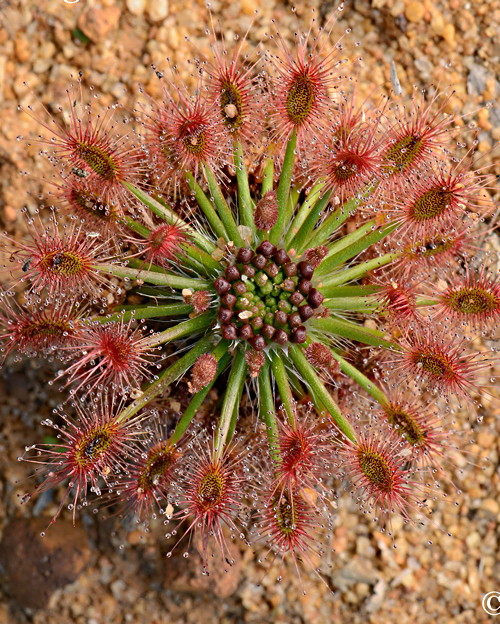
Drosera barbigera. Photo © Richard Nunn.
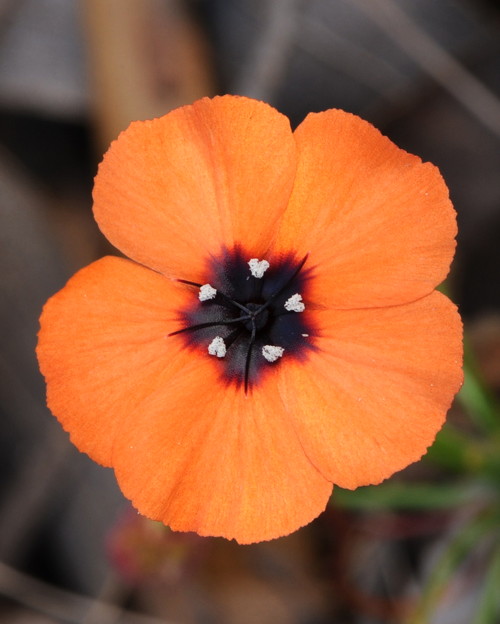
Drosera barbigera. Photo © Richard Nunn.

Drosera barbigera. Photo © Thilo Krueger.

Drosera barbigera. Photo © Thilo Krueger.
Drosera bindoon Lowrie
The epithet bindoon is derived from an indigenous Australian name meaning “place where yams grow”. This species was first encountered in an area generally referred to as the Bindoon region.
Drosera bindoon has a restricted range in Western Australia. It has only been found between Muchea and Wannamal over a distance of 40 km.
It grows in heavy laterite soils.
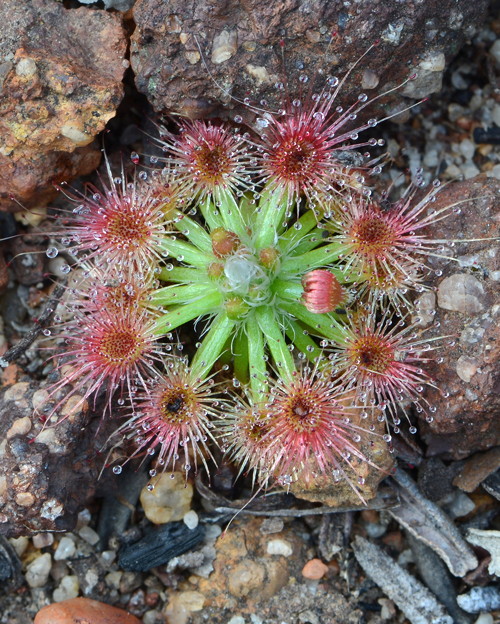
Drosera bindoon. Photo © Richard Nunn.
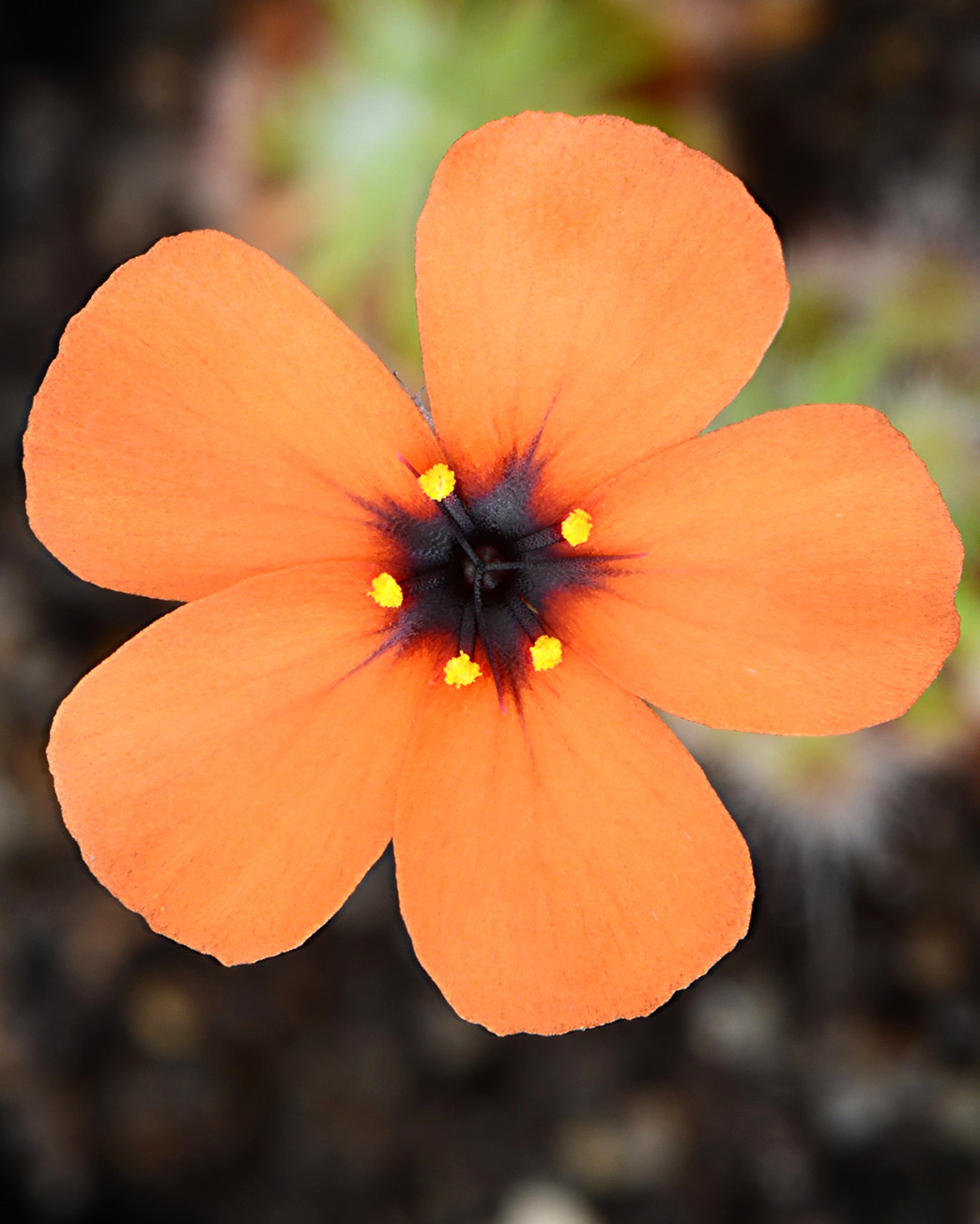
Drosera bindoon. Photo © Richard Nunn.
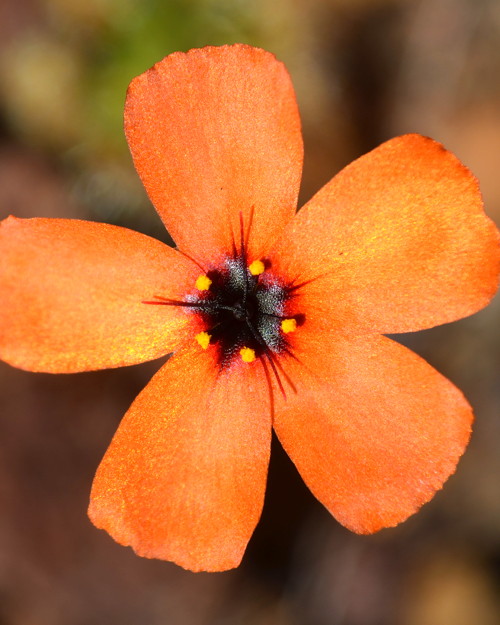
Drosera bindoon. Photo © Thilo Krueger.
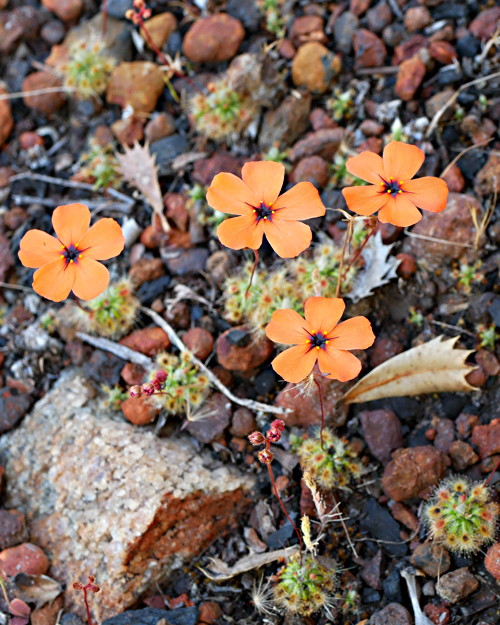
Drosera bindoon. Photo © Thilo Krueger.
Drosera callistos N.G.Marchant & Lowrie
The epithet callistos is derived from the Greek callistos (beautiful), a reference to the pretty overall form of the plant.
Drosera callistos is known from Western Australia where it is recorded around Gidgegannup and the lakes and state forest along the Brookton Highway.
It grows in heavy, laterite-covered sandy soils, as well as in patches of pure sand surrounded by laterite derived soils.
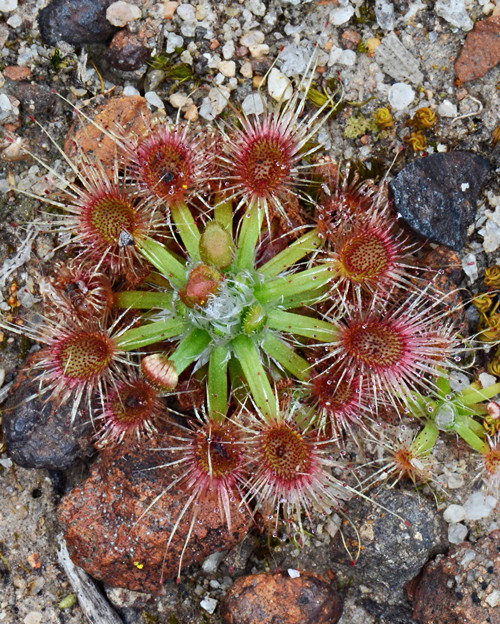
Drosera callistos. Photo © Richard Nunn.
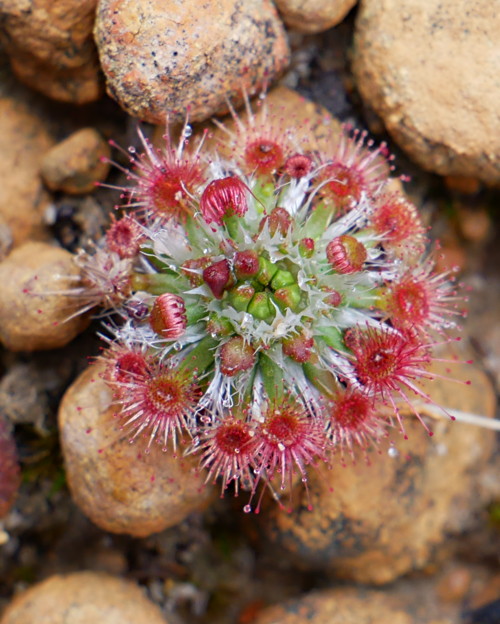
Drosera callistos. Photo © Thilo Krueger.
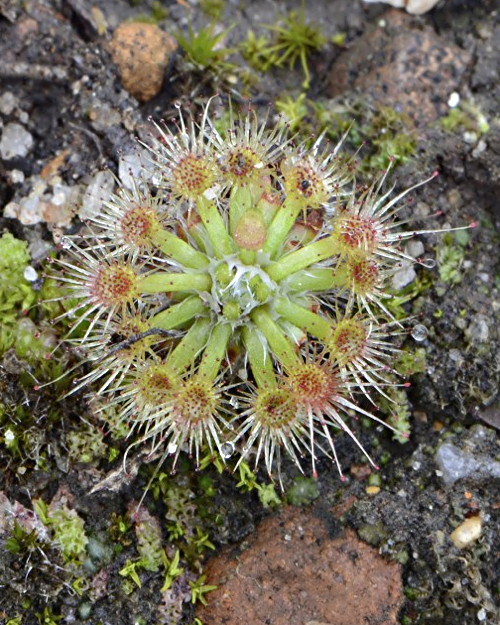
Drosera callistos. Photo © Richard Nunn.
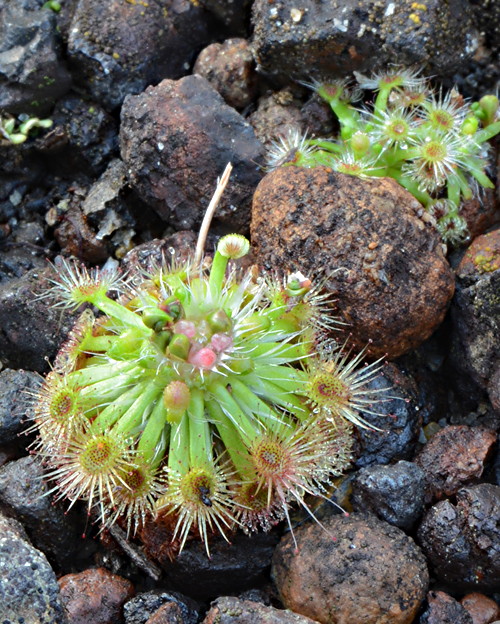
Drosera callistos. Photo © Richard Nunn.
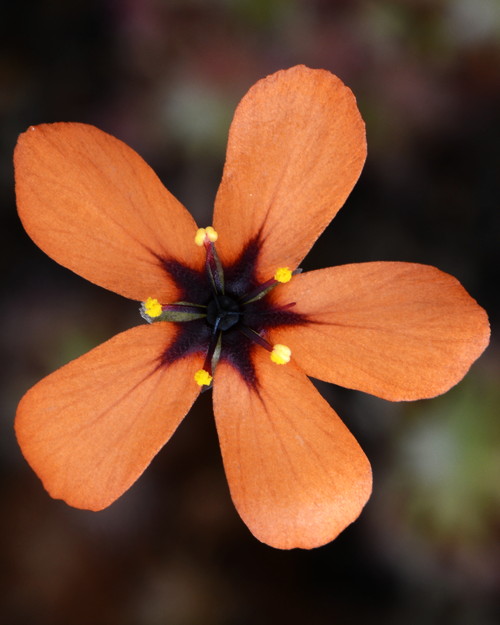
Drosera callistos. Photo © Richard Nunn.
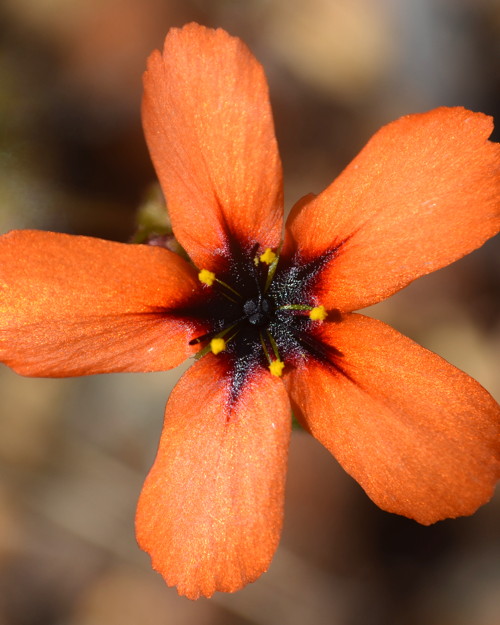
Drosera callistos. Photo © Thilo Krueger.
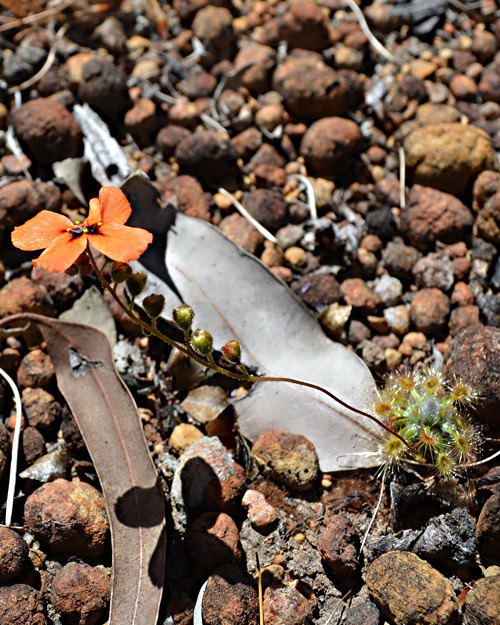
Drosera callistos. Photo © Thilo Krueger.
Drosera citrina Lowrie & Carlquist
The epithet citrina is derived from the Greek citrinus (lemon coloured), in reference to its flower colour.
Drosera citrina is known from Western Australia, with records from the Regan’s Ford (Moore River) and Boonanarring areas.
It grows in well-drained, deep yellow sand between and under low shrubs on open heathland or under the shelter of Banksia menziesii woodland.
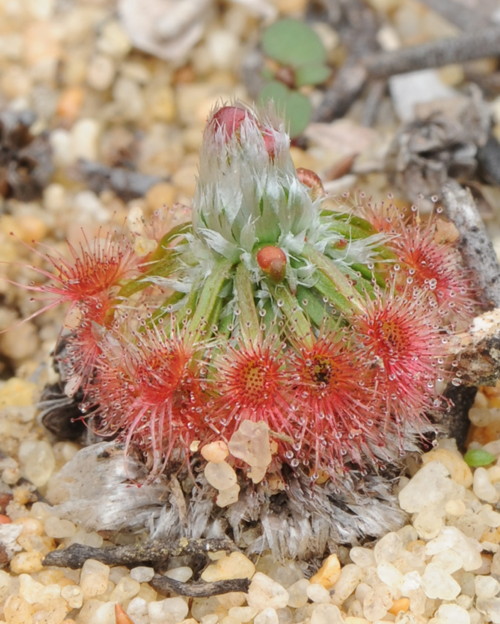
Drosera citrina. Photo © Richard Nunn.
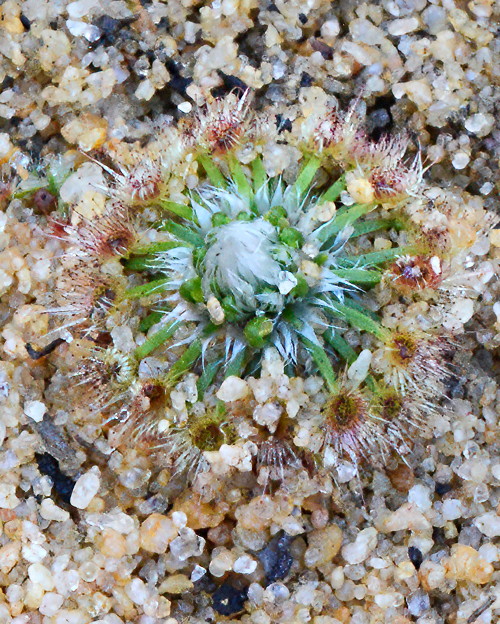
Drosera citrina. Photo © Richard Nunn.
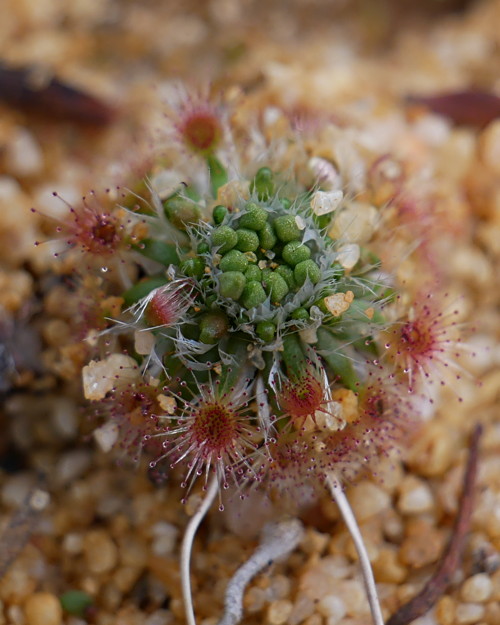
Drosera citrina. Photo © Thilo Krueger.
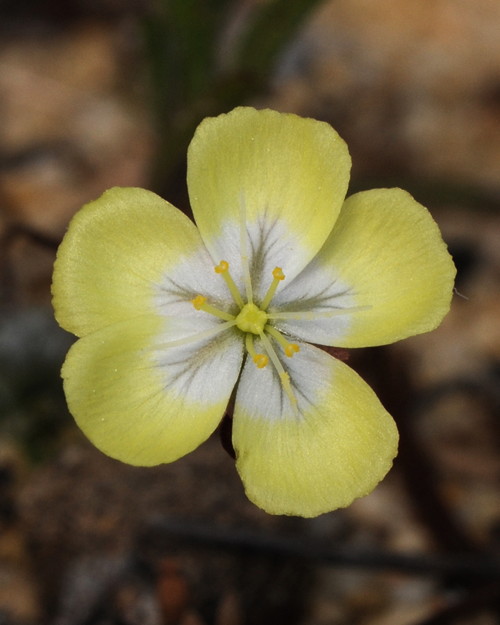
Drosera citrina. Photo © Richard Nunn.
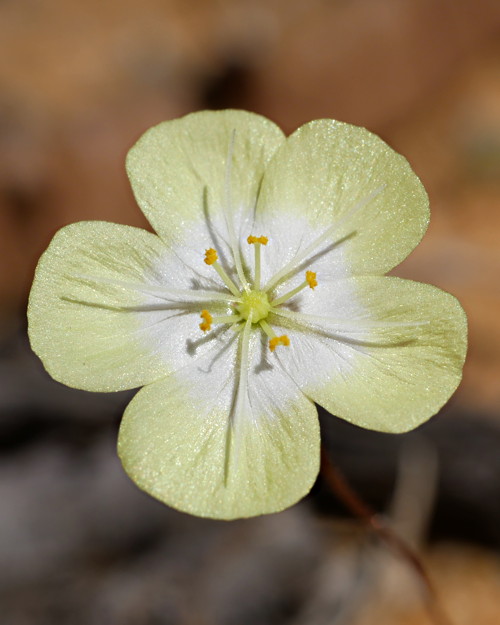
Drosera citrina. Photo © Thilo Krueger.
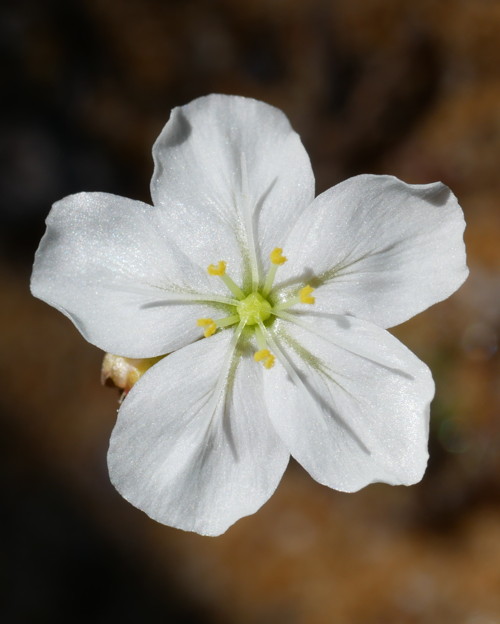
Drosera citrina. Photo © Thilo Krueger.
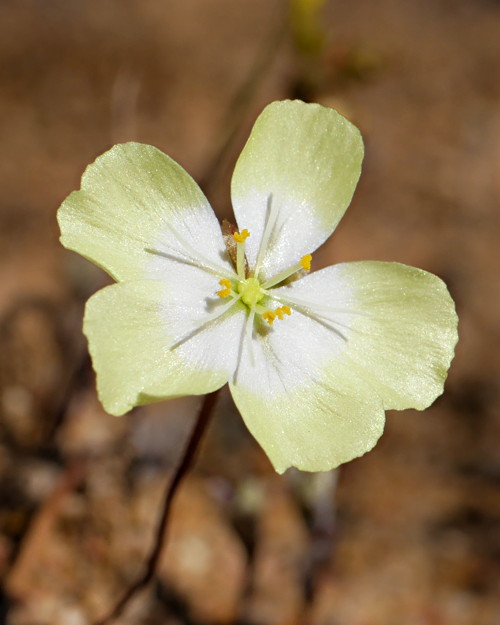
Drosera citrina. Photo © Thilo Krueger.

Drosera citrina. Photo © Thilo Krueger.

Drosera citrina. Photo © Thilo Krueger.
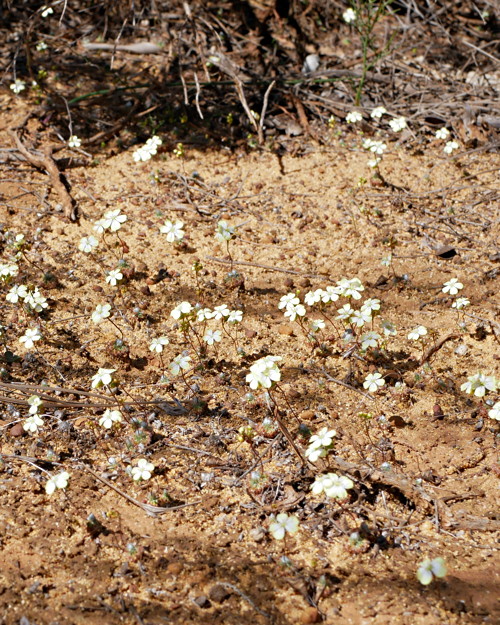
Drosera citrina. Photo © Thilo Krueger.
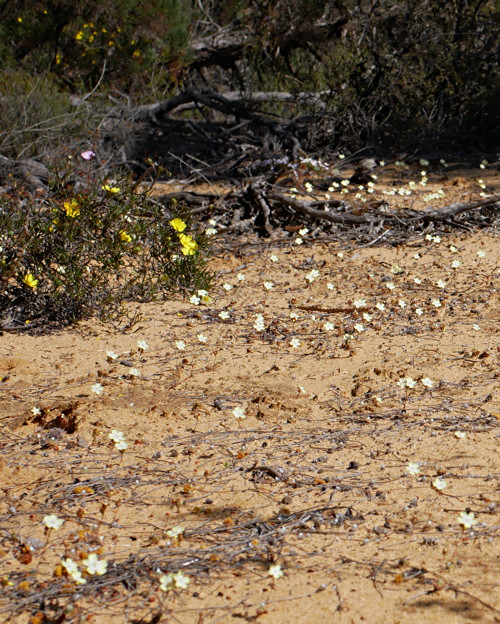
Drosera citrina. Photo © Thilo Krueger.
Drosera closterostigma N.G.Marchant & Lowrie
The epithet closterostigma is derived from the Greek closteros (spindle-shaped), and stigma (stigma), in reference to the shape of the stigma of this species.
Drosera closterostigma is known from Western Australia, with records from Gingin to Cataby, and eastwards towards Mogumber
It grows in deep white sand which often appears grey in colour due to the presence of humus. Often situated in winter-wet depressions or swampland heath in association with numerous herbaceous species, low shrubs and paperbark trees (Melaleuca sp.).
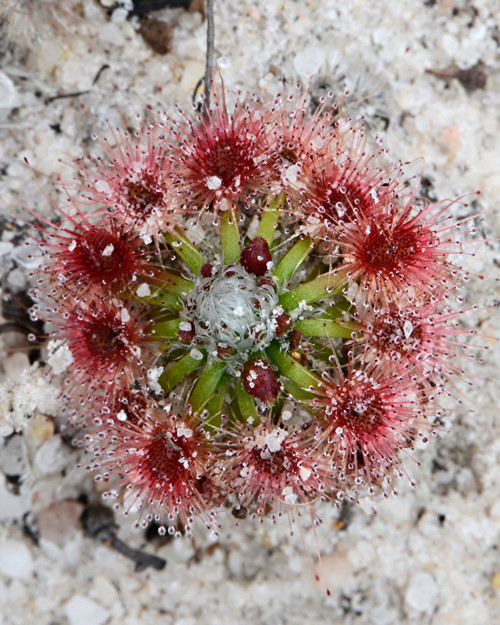
Drosera closterostigma. Photo © Richard Nunn.

Drosera closterostigma. Photo © Richard Nunn.

Drosera closterostigma. Photo © Richard Nunn.
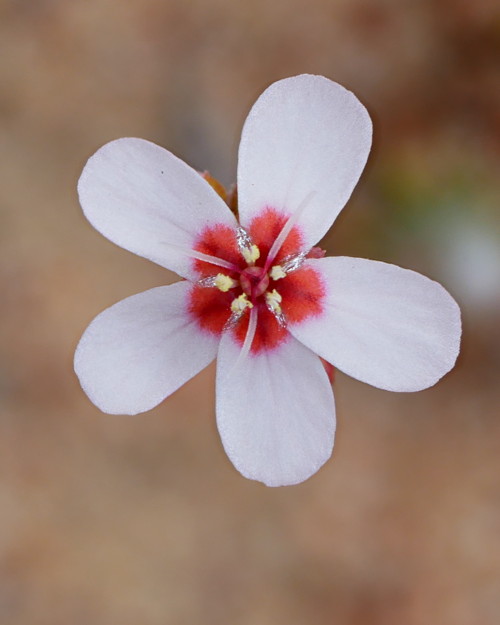
Drosera closterostigma. Photo © Thilo Krueger.
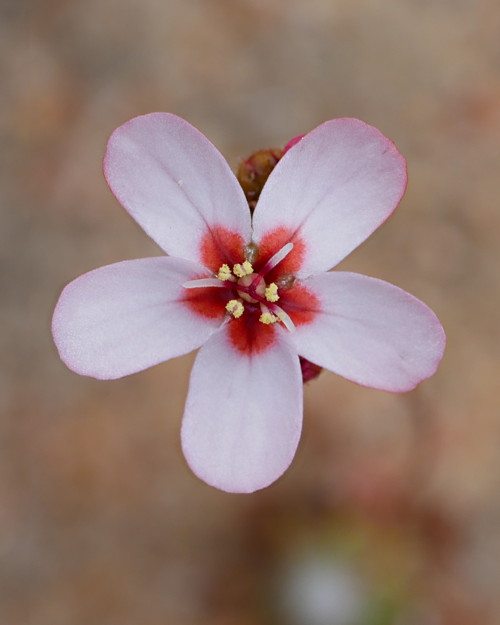
Drosera closterostigma. Photo © Thilo Krueger.
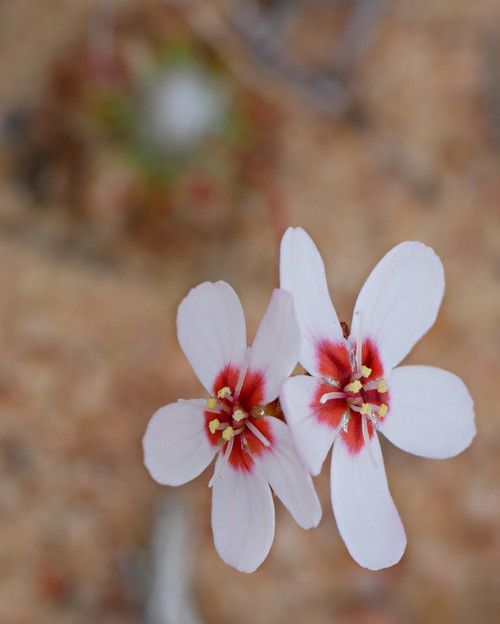
Drosera closterostigma. Photo © Thilo Krueger.

Drosera closterostigma. Photo © Thilo Krueger.
Drosera coomallo Lowrie
The epithet coomallo appears to be derived from a Noongar indigenous Australian word. Its meaning is unknown. Since colonisation, Coomallo has been the name given to Coomallo Creek, named by a surveyor in 1880. Hence, Coomallo Pool, Coomallo phone exchange and Coomallo Nature Reserve, on the edge of which this species was rediscovered.
Drosera coomallo is known from Western Australia, with records around Badgingarra, Cataby and Coomallo.
This species grows in laterite pebbles with a little silica sand over laterite sheet rock on the slopes of lateritic hills.
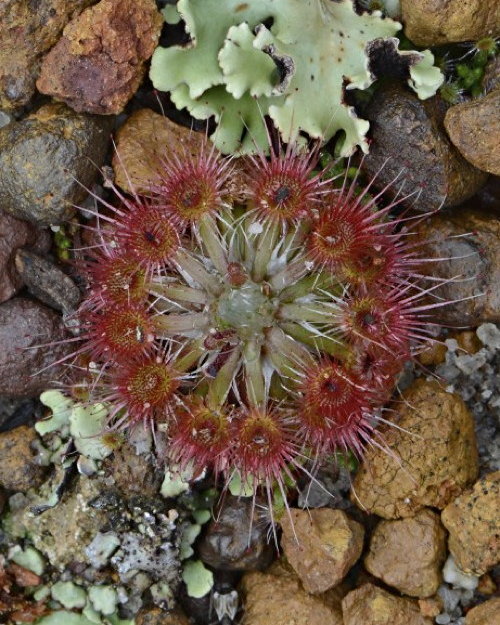
Drosera coomallo. Photo © Richard Nunn.

Drosera coomallo. Photo © Richard Nunn.
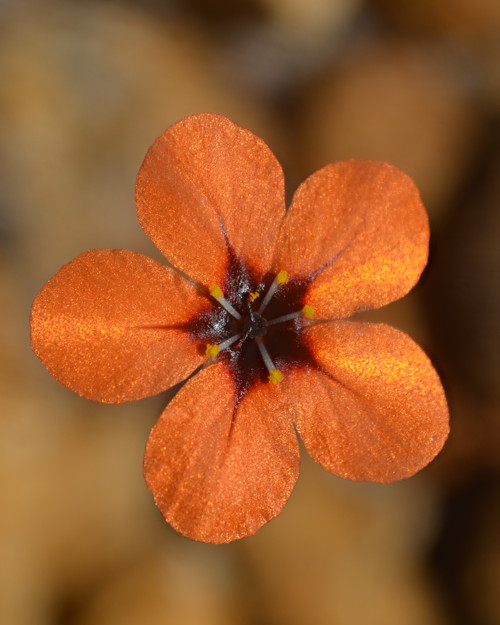
Drosera coomallo. Photo © Thilo Krueger.
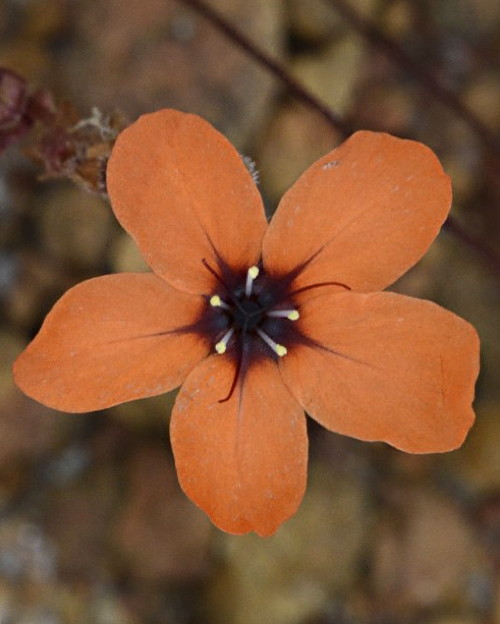
Drosera coomallo. Photo © Richard Nunn.

Drosera coomallo. Photo © Thilo Krueger.
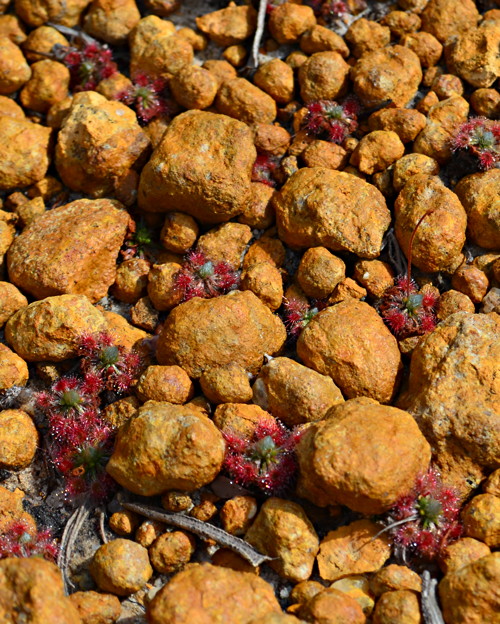
Drosera coomallo. Photo © Thilo Krueger.
Drosera depauperata Lowrie & Conran
The epithet depauperata is from the Latin depauperatus (depauperate), a reference to its much-reduced flower size as compared to the morphologically similar flower of Drosera pulchella. This species is thought to have originated as a fertile natural hybrid between Drosera australis and Drosera pulchella; the reduced flower size of Drosera depauperata may be due to the influence of putative parent Drosera australis, with its rather small flower.
Drosera depauperata is known from Western Australia, with records only from the type location on the margins of Lake Pleasant View, near Manypeaks, where it is quite common.
It grows on the margins of the lake and in wet depressions in sandy soils under paperbarks (Melaleuca sp.).
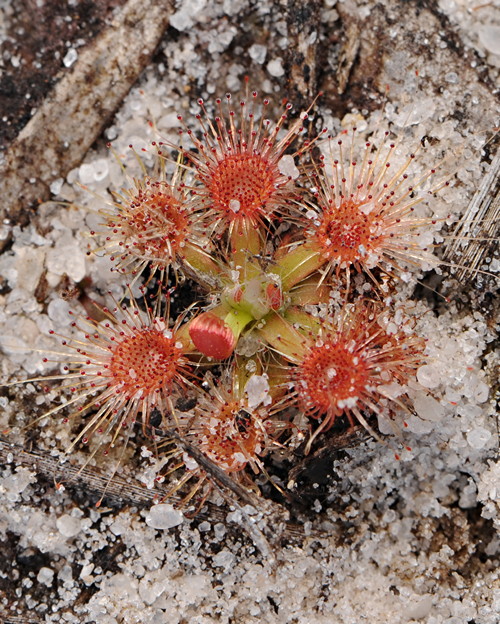
Drosera depauperata. Photo © Richard Nunn.
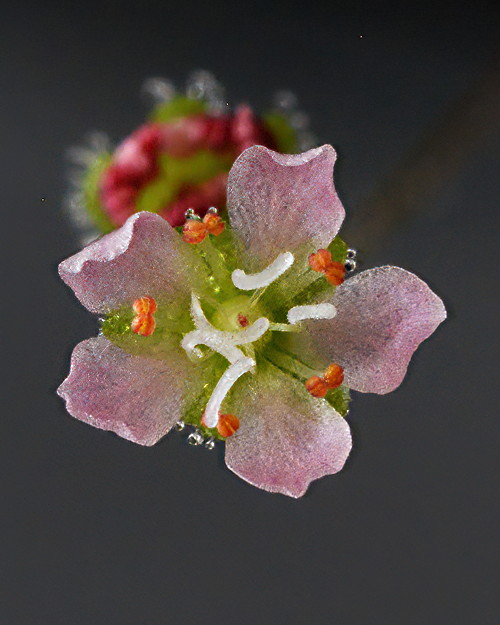
Drosera depauperata. Photo © Richard Nunn.

Drosera depauperata. Photo © Thilo Krueger.
Drosera dichrosepala Turcz.
The epithet dichrosepala is derived from the Greek dis (double), chroia (colour) and the Latin sepalum (sepal), in reference to its bi-coloured sepals, which are translucent, pale, yellowish-green with a blush of orange near the base.
Drosera dichrosepala is known from Western Australia, where it has been recorded only from near Woodanilling and two areas between Katanning and Nyabing.
It grows in shallow, sandy soil over laterite mixed with laterite pebble alluvium on low heath and scrub land.
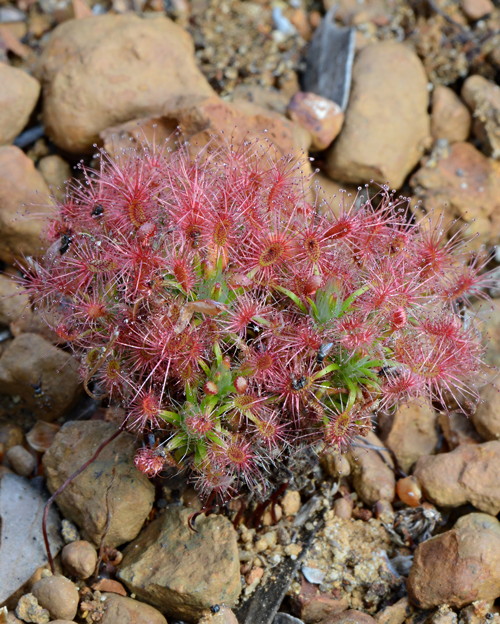
Drosera dichrosepala. Photo © Richard Nunn.
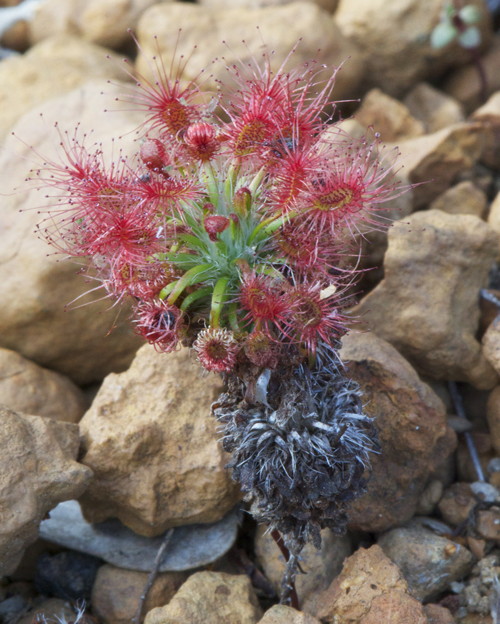
Drosera dichrosepala. Photo © Richard Nunn.
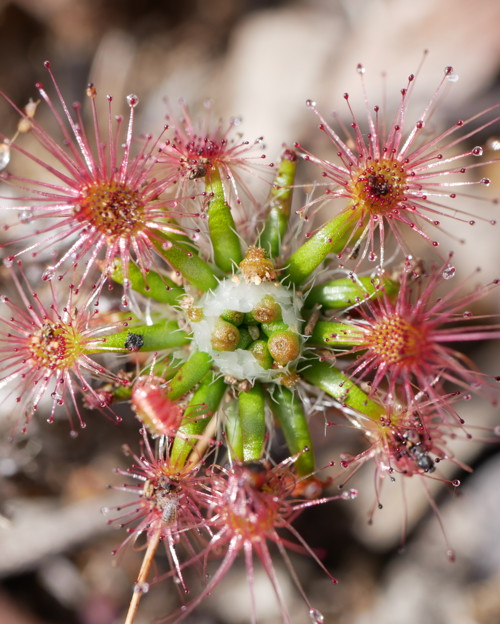
Drosera dichrosepala. Photo © Thilo Krueger.
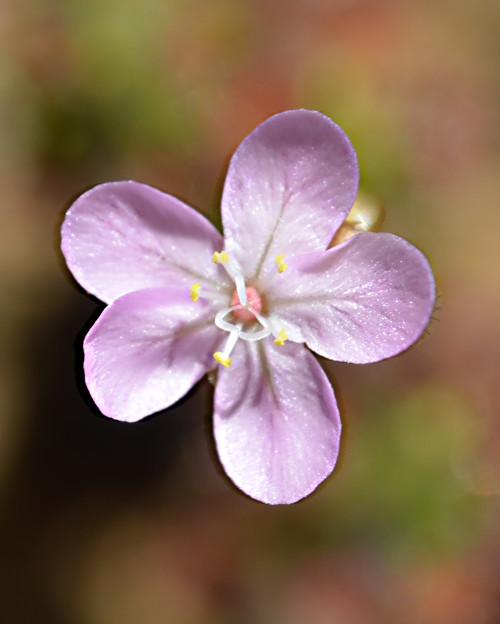
Drosera dichrosepala. Photo © Thilo Krueger.

Drosera dichrosepala. Photo © Thilo Krueger.
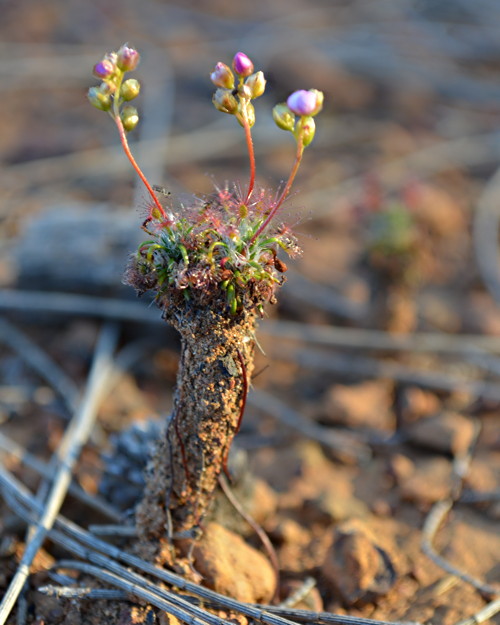
Drosera dichrosepala. Photo © Thilo Krueger.
Drosera echinoblastus N.G.Marchant & Lowrie
The epithet echinoblastus is derived from the Greek echinos (spine) and blastos (shoot), in reference to the bristly stipule bud of this species.
Drosera echinoblastus is widespread in the Hill River region, Coomallo and Mount Lesueur in Western Australia, but has a range that runs 100 km to the north and 200 km to the south of this area.
It grows in deep white sandy soils or beige clayey-sand soils between and under low shrubs on heathland. Drosera echinoblastus favours sites beside winter-wet streams, streamlets, depressions and watershed areas.
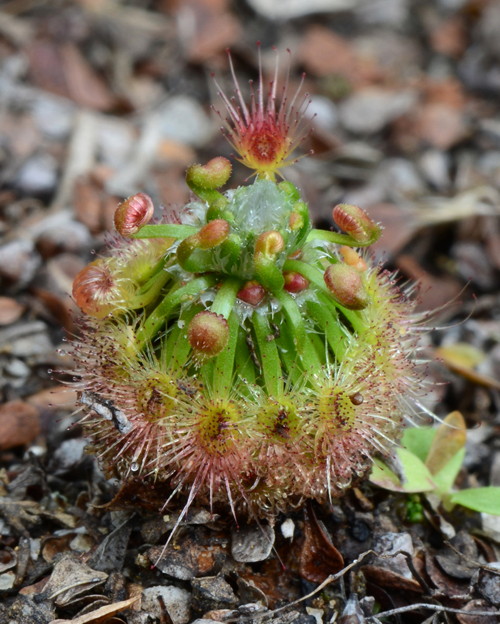
Drosera echinoblastus. Photo © Richard Nunn.
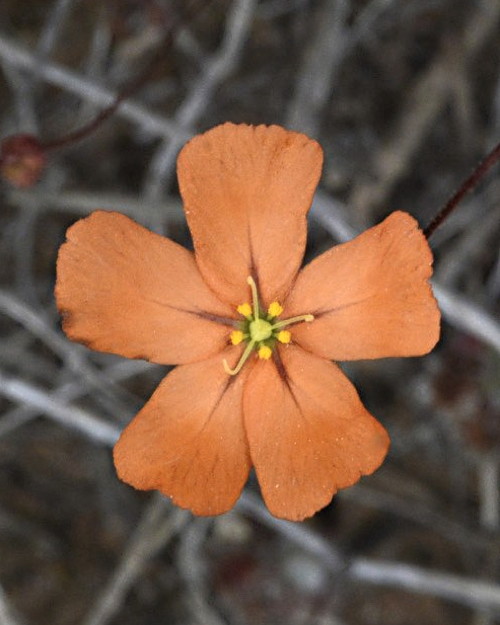
Drosera echinoblastus. Photo © Richard Nunn.

Drosera echinoblastus. Photo © Thilo Krueger.
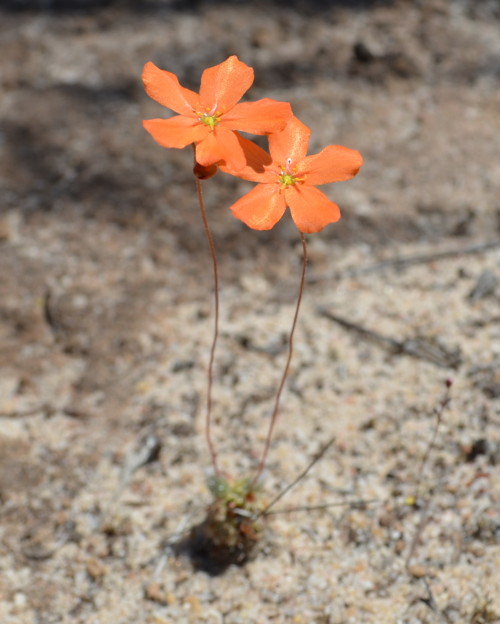
Drosera echinoblastus. Photo © Thilo Krueger.
